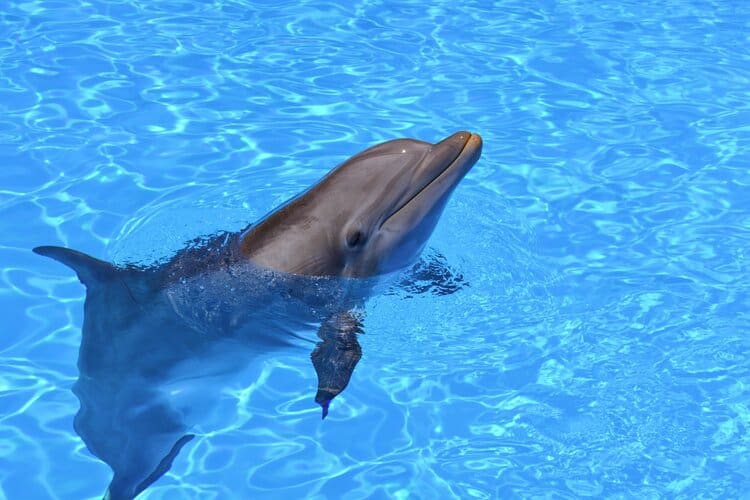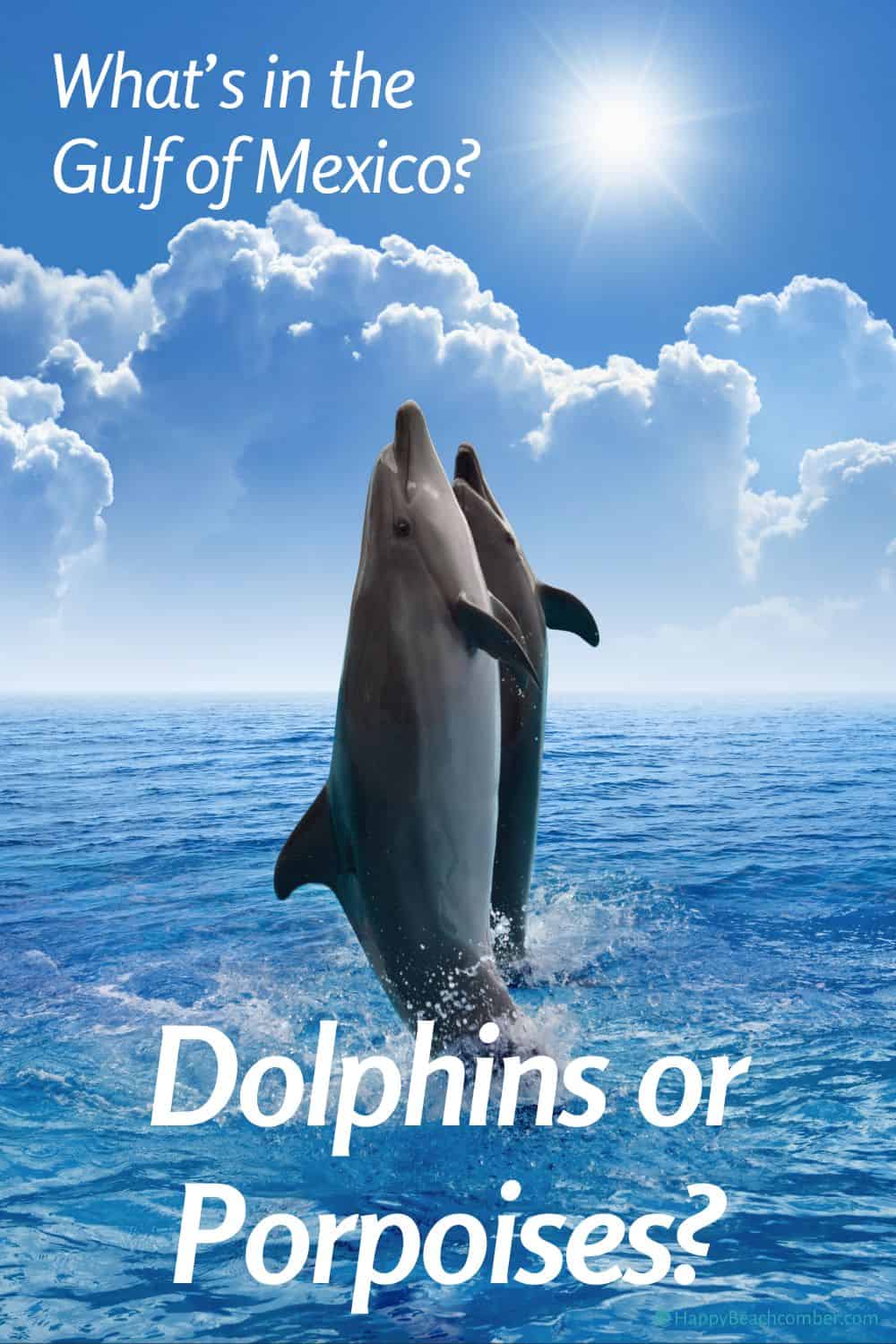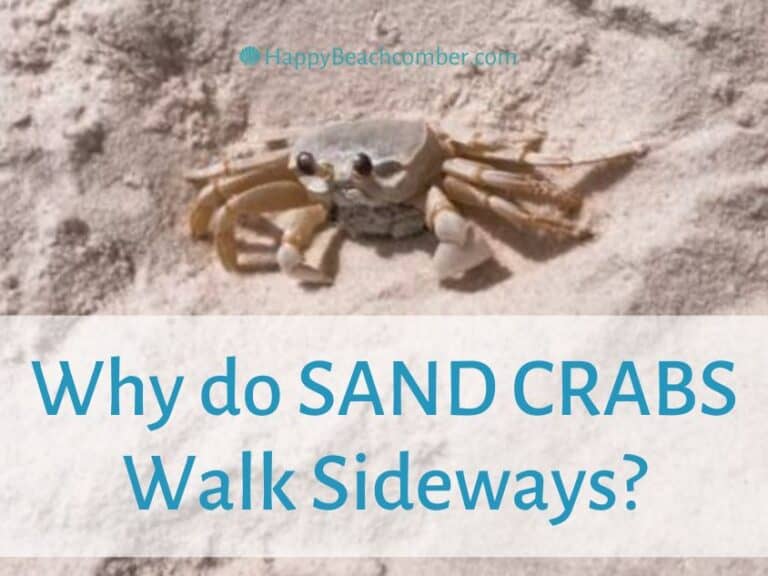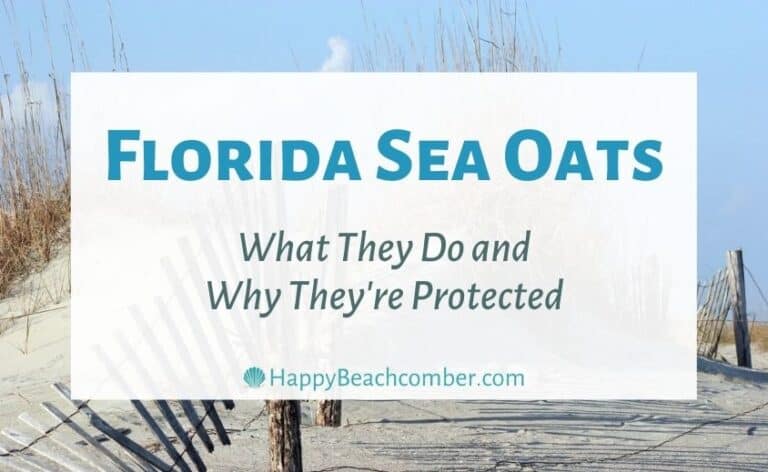Does the Gulf of Mexico Have Dolphins or Porpoises?
Lots of people don’t know the difference between a dolphin and a porpoise. Here are the facts and some interesting info, especially useful if you have a teaching moment with kids.


Dolphin or Porpoise, Which Is It?
If you just want a quick answer, it’s simple. Porpoises don’t live in the Gulf of Mexico. What you see off the Florida and Alabama Gulf coast beaches are dolphins. The same is true for Crystal Beach and other Texas beaches on the Gulf.
The Gulf of Mexico is home to nine different species of dolphins. Only three live in the shallow waters near beaches: Bottlenose (Tursiops truncatus), Risso’s dolphin (Grampus griseus), and Atlantic spotted dolphin (Stenella Frontalis). The other six species are found in deep waters far from land.
Of the three nearshore species, the bottlenose is by far the most common. That’s the kind of dolphin you’re seeing from the beaches along the northern Gulf of Mexico. If you’re old enough to remember the TV show “Flipper“, the star was a bottlenose.
The other six species that you would only ever see in deep waters are:
- Pantropical spotted dolphin, Stenella attenuata
- Clymene dolphin, Stenella clymene
- Roughed-tooth dolphin, Steno bredanensis
- Spinner dolphin, Stenella longirostris
- Striped dolphin, Stenella coeruleoalba
- Fraser’s dolphin, Lagenodelphis hosei

Interesting Facts About the Bottlenose Dolphin
The following applies to the Tursiops truncatus species found in shallow water near beaches in the Gulf of Mexico.
A group of dolphins is called a pod. The size of a pod may range from only a few to a group of hundreds when pods join together. Dolphins often hunt in pods, teaming up to go after a school of fish.
Bottlenose dolphins are known for being very social with each other and even with humans. It’s common to see them “chasing” a boat because they enjoy riding in the waves of the boat’s wake. They also exhibit playful behavior in the way they sometimes flip their tails as they dive. If you’re lucky you’ll see them leap completely out of the water – and it isn’t that uncommon to catch such a show on the northern Gulf Coast beaches.
Size: Adults ranges from 6 to 12 feet in length and weight from 300 to 600 pounds. Most often the males are slightly larger than the females.
Lifespan: Life expectancy is at least 40 years, and some may live as long as 60 years or longer, especially females. Females begin to reproduce between the ages of 5 and 15, and some have given birth at age 45. Pregnancy lasts for 12 months. Baby calves nurse for 20 months and remain with their mothers from 3 to as long as 6 years.
Looks: Bottlenose dolphins are named as such because of their thick, short beaks. Their upper bodies are usually dark gray, with lighter gray on their sides that fades to very light on their bellies (ranging from white to very light pink).
Diet: They eat a variety of fish, squid, octopus, and crustaceans (shrimp, crab, etc.). An adult consumes between 15 and 30 pounds of food a day.
Habitat: In the United States, in addition to the Gulf of Mexico, bottlenose dolphins can be found off the coasts of California, Oregon, Washington, Hawaii, and off the east coast from Florida to Massachusetts. They live in gulfs, harbors, bays, estuaries, and both nearshore waters and in the depths of the open ocean.
The largest member of the dolphin family is not what you might expect. It’s the orca, or killer whale! In fact, pilot whales are also in the dolphin family. There are whales in the porpoise family as well. That’s because any species of dolphin or porpoise that is longer than 30 feet is referred to as a whale.
Dolphins sleep at night, but only for a couple of hours at a time.
The bottlenose dolphin is not an endangered species, but they are susceptible to a number of threats such as disease, pollution, habitat alteration, and the problem of humans feeding them. For those reasons they are protected under the Marine Mammal Protection Act, which makes it illegal to hunt, harass, capture, or kill them in U. S. waters.
Note that under the MMPA it is illegal to feed or to attempt to feed dolphins.

Marcus Wernicke (Tuugaalik), Porpoise.org Porpoise Conservation Society (www.porpoise.org), CC BY-SA 4.0, via Wikimedia Commons
What is the Difference Between a Dolphin and a Porpoise?
In the looks department, the difference is mostly in the face. Whereas the common harbor porpoise has a rounder face and no beak, the bottlenose dolphin has a bulbous head, a longer nose and a bigger mouth. A dolphin’s body is longer and leaner, with a larger dorsal fin that has a slight curve to it. The dorsal fin on a harbor porpoise is small and triangular in shape, and the porpoise body is shorter and more compact.

The above illustration isn’t perfect but at least gives you a fair idea. Generally speaking, you can think of dolphins as long and slender, and porpoises as short and stocky.
Dolphins communicate with each other underwater by making whistling sounds through their blowholes. As far as scientists can determine, porpoises don’t do this.
Dolphins are much more prevalent than porpoises, with 32 dolphin species compared to only 6 porpoise species.
Porpoises tend to live in smaller, less stable groups, whereas many dolphin pods may combine to form one tremendous group.
Porpoises tend to live quieter lives, while dolphins have been called extroverts because they are quite active on the surface, make lots of noise and interact more.
Porpoises are smaller, with full grown adults usually no longer than 7 feet in length.
The dorsal fin of a porpoise looks more like that of a shark, small and triangular.
How Are Dolphins and Porpoises Alike?
Both are “cetaceans”, a group of aquatic mammals commonly called whales, dolphins, and porpoises. They breathe air, give birth to live young, and have hair
Both have large, complex brains and are very intelligent. Doubtless this is why the dolphin is one of the most studied marine mammals in the wild.
While dolphins are known to be more curious around humans, both dolphins and porpoises can be very playful.
Both have the ability to produce sonar waves by pushing air through their blowholes, which helps them “see” with sound. Both are also capable of receiving sound waves in their lower jaws, which are transmitted to their ears and brains to help them locate prey or obstacles in the water.
Now, next time you’re on the beach and someone starts pointing and yelling “Look at the porpoises!”, you’ll know better. This might even be a conversation starter to meet new friends. While you’re at it, please tell them to check out HappyBeachcomber.com!
What other questions do you or your kids have? You might like to see…
If you enjoyed this info please share on Pinterest and help spread the word!











Ƭhis info is іnvaluable. How can I find out more?
Thanks so much!
To find out lots more just click the links in the article listed under “Sources” (at the very end of the article).
Best,
Susan